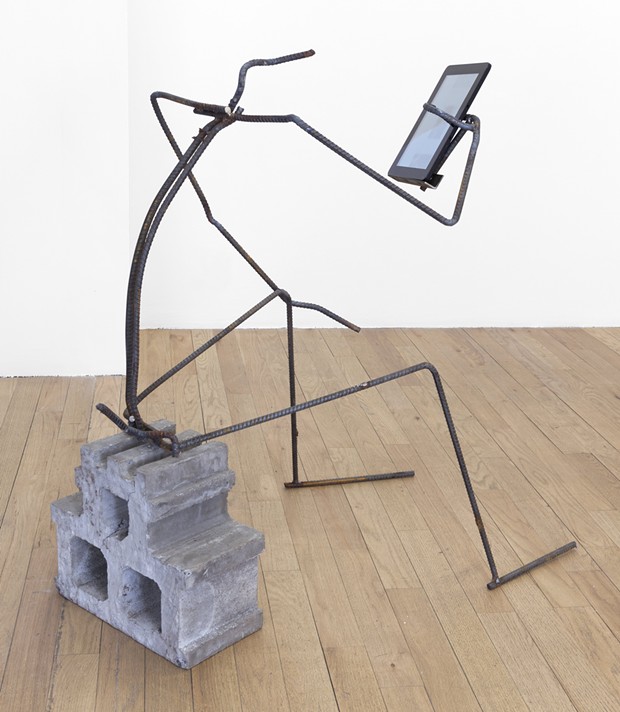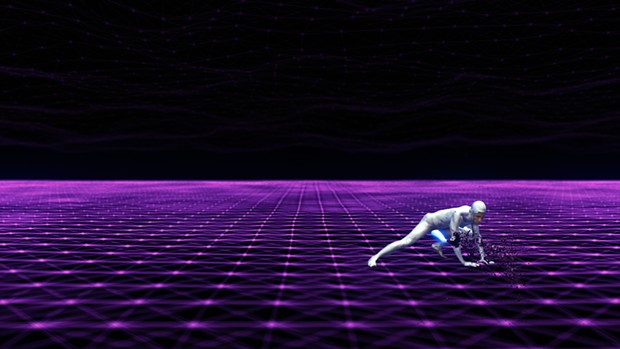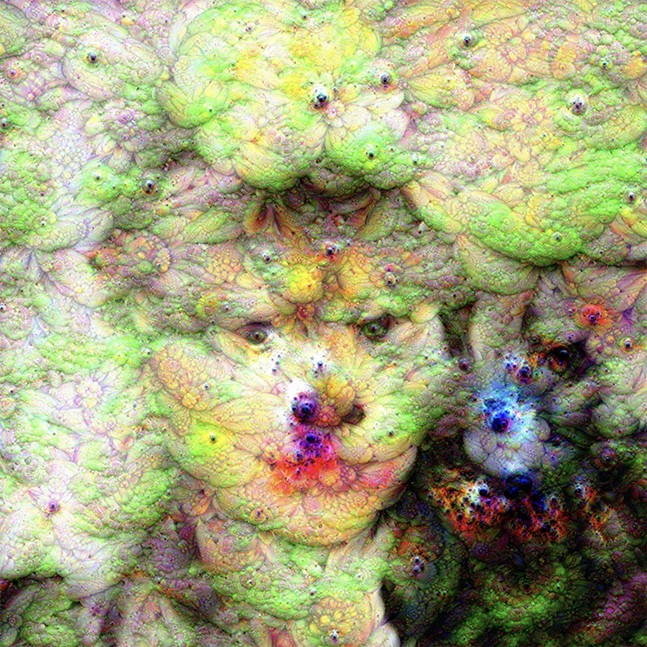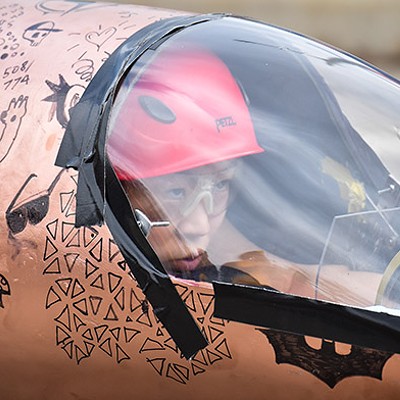Paradox: The Body in the Age of AI, the latest exhibition at Carnegie Mellon University’s Miller Institute for Contemporary Art, confronts the question of preserving humanity at the dawn of the AI age. Curated by Miller Institute director, Elizabeth Chodos, the show takes inspiration from the Moravec Paradox, the theory that programming AI to perform complex tasks is far simpler than mimicking that which comes second nature to humans
— in other words, it’s easier to teach a robot to play chess than it is to teach it how to walk or see. With that in mind, a press release states that the show’s chosen artists “consider the body’s elusive and underestimated power” and question how we can create cyborgs when we still barely understand the mysteries of the human body.
The first floor hints at a future dystopia with Siebren Versteeg’s steel-rod stick-person sculptures engaging in monotonous processes — his "Danny Liker" sits stooped over, mindlessly scrolling through an app, as "The Maker and the Made" endlessly produces ephemeral paintings that disappear into the digital ether. Both pieces include the cyberpunk touch of a skull-shaped cinder block. As if to drive the tone home, Jillian Mayer’s bright, mineral-like sculptures — called “
slumpies” — grow from the walls and floor like cave rock formations, the remnants of a once-natural world overcome by the white, sterile gallery environment.
click to enlarge 
Siebren Versteeg
Danny Liker
The second floor pops with playful, colorful works, all with the power to mesmerize. The transfixing
Beadman by Brian Bress seems to comment on gif culture with the looped, slow-motion video of a clownish, bead-covered figure forever jumping on a trampoline.
The Flower Matrix Pod by Claudia Hart invites visitors into a psychedelic environment complete with a VR headset and suspended headphones playing what sounds like a creepy anime version of Sigur Rós. A dark theater space houses Zach Blas's
Contra-Internet: Jubilee 2033, an experimental film installation inspired by the 1978 cult classic
Jubilee. The immersive piece exudes punk comic sensibility with intellectuals Ayn Rand and Alan Greenspan meeting an androgynous, silver-painted prophet who, among other things, humps a
Tron-like internet landscape with their glowing, CGI phallus.
click to enlarge 
Zach Blas
Contra-Internet: Jubilee 2033
Though less technical, the sculptures
"Soundsuit" by Nick Cave (no, not that Nick Cave), a towering, Seussian creature patched in bright colors, and the industrial, Dali-esque "Systems I" by Jes Fan
are no less fascinating. At the center of it all is Eunsu Kang’s
"Kyungja," a giant vinyl print created with a machine algorithm trained to generate human faces without recognizing gender, ethnicity, or age. The result resembles a Magic Eye poster by way of author Jeff VanderMeer’s Southern Reach trilogy, a sci-fi series about an uncanny dimension where humans, animals, and plant life converge in haunting ways.
Though more minimalist, the third floor impresses with its collection of elegant works. "Experiments in Absorption" by Kate Cooper serves as the centerpiece, and rightfully so – the stunning installation comments on the dehumanizing qualities of consumer culture with large monitors featuring fragmented images of the human body, right down to what looks like a DNA strand periodically engulfed by a black fog. Stephanie Dinkins created an ancient, Alexa-like storyteller in the form of a large, black conch shell with "Not The Only One (NTOO)," while Sarah Oppenheimer delights with "I-134442," an unassuming, interactive wall installation that examines the relationship between humans and architectural spaces.
Paradox: The Body in the Age of AI delivers an unpretentious, exciting examination of our possible future. Whether or not it answers the larger questions surrounding AI seems less important than that it was at least curious enough to attempt such a feat.





















